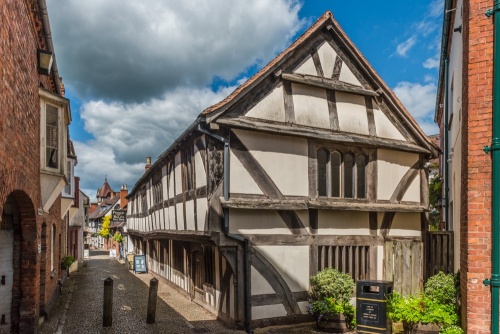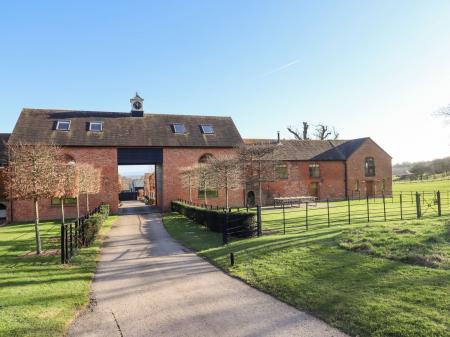
History
The merchant built his house directly over a stream and used the running water to wash wool fleeces. You can still see the stream bed, now dry, through a glass panel in the floor.
In the 16th century, the building was converted to become a boy's grammar school and you can still see graffiti carved by bored schoolboys. The earliest graffiti dates to around 1770.

The last schoolmaster was William Humphreys, appointed by the Bishop of Hereford in 1799. Falling numbers of students meant that the school closed its doors for good in 1830. The building was then divided into 5 separate tenement flats. The internal divisions were removed in 1969 and the house was restored to serve as the local history museum for Ledbury and the surrounding region.
Like many of the houses along Church Lane, the Heritage Centre has a jettied first floor, projecting out over the ground floor. The projecting upper floor helped maximise interior space and also acted to keep rain away from the lower floor and the entrance.
A section of interior wall covering has been removed so you can see the underlying wattle and daub construction.

Museum Highlights
The Heritage Centre houses a museum of Ledbury history, with displays covering poets Elizabeth Barrett Browning and John Masefield and their association with Ledbury. You can also learn about Ledbury's canal and railway heritage and try your hand at building a scale-model timber-framed building.
One of the most popular exhibits is a panoramic photograph of Ledbury's High Street, with a history of each building dating back to the early Victorian period.
Ledbury Preserves
Another display looks at the history of Ledbury Preserves, a popular local business that grew to become the richest preserves business in Britain and - according to locals - the best marmalade in the world.
The story of Ledbury Preserves, or 'The Pozzy' as it became mysteriously known, started in 1916 when local entrepreneur Tom Davies founded a jam factory as a way to use up surplus fruit from local farms. Davies was given the contract to supply jams to Buckingham Palace and the business grew quickly.
Davies went bankrupt in 1928 but buyers stepped in and Ledbury Preserves prospered during WWII when jam made in Ledbury was part of the military emergency kit. The company continued in operation, through several buyouts and amalgamations, until 2008.

Other museum highlights that caught our attention include a display of local geology, Stowford Press cider, and the old grammar school. At one end of the building is an original fireplace built into the end wall. You can step right inside the fireplace opening and look straight up through the floors to the top of the building.
As of this writing, the museum is free to enter, but donations are welcome. The museum occupies the bottom floor while the top floor is home to a collective of local artists.
The Heritage Centre is very easy to reach from the Market Hall in the centre of Ledbury's High Street. From the Hall it is just a few steps to the bottom of Church Lane, leading away from the High Street towards St Michael's Church. The Heritage Centre is at the top of the cobbled street on the left.








 We've 'tagged' this attraction information to help you find related historic attractions and learn more about major time periods mentioned.
We've 'tagged' this attraction information to help you find related historic attractions and learn more about major time periods mentioned.



